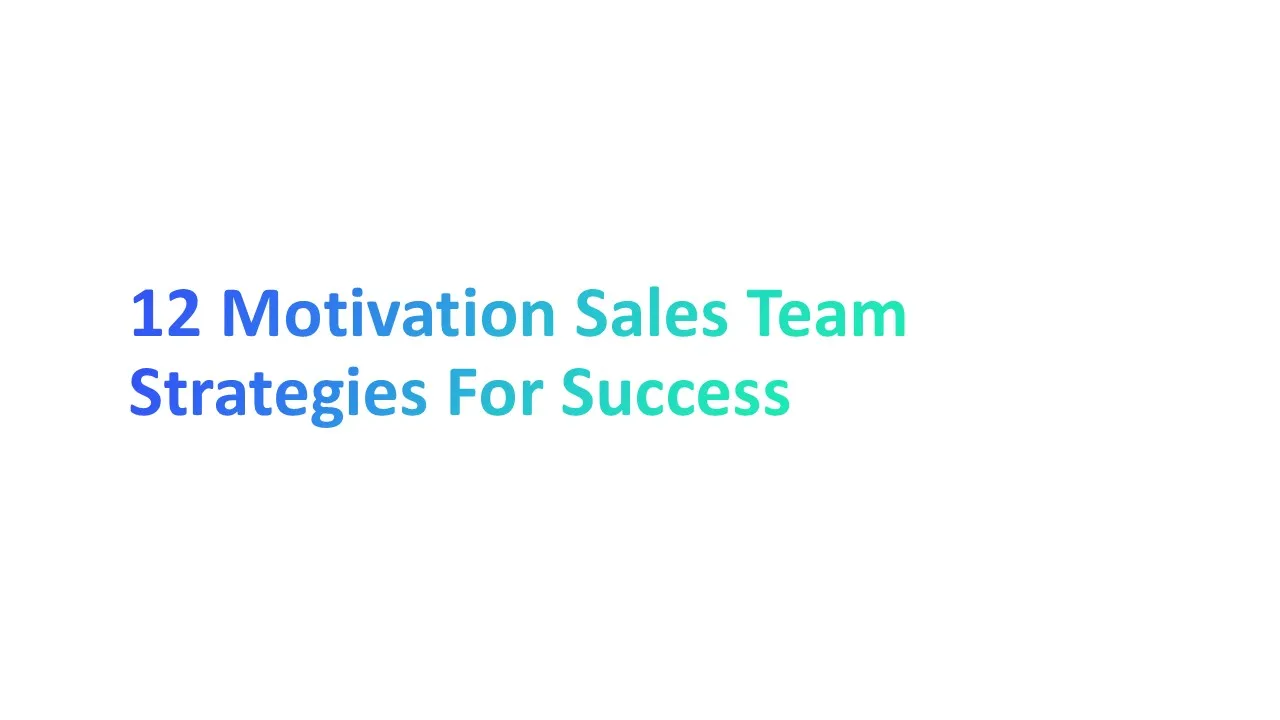Generating leads for sales is a critical part of any business strategy, especially in 2025, when staying ahead of the competition relies heavily on effective lead generation efforts. Whether you're looking to generate high-quality leads or streamline your sales process, knowing where and how to find potential customers is key.
In fact, studies show that businesses with strong lead generation strategies experience 133% more revenue growth compared to those without. As we dive into the best ways to generate sales leads, it’s essential to keep in mind the importance of targeting the right audience and qualifying leads to ensure success.
From using social media to creating valuable content, these strategies can help you capture leads at every stage of your sales funnel. Let’s explore 15 effective ways to generate leads for sales in 2025 and take your sales pipeline to the next level!
What Are Sales Leads?

Sales leads are potential prospects who have shown interest in your product or service. These individuals or businesses are typically identified through methods like contact forms, landing pages, and lead generation channels.
A sales lead could come from various sources, including website visitors or social media, and are often categorized based on their intent to purchase. Sales reps and the marketing team work together to nurture these leads through the sales funnel.
The lead qualification process is crucial in determining the likelihood of these leads turning into qualified sales, allowing for more targeted follow-up efforts.
Why Are Sales Leads Crucial for Business Growth?
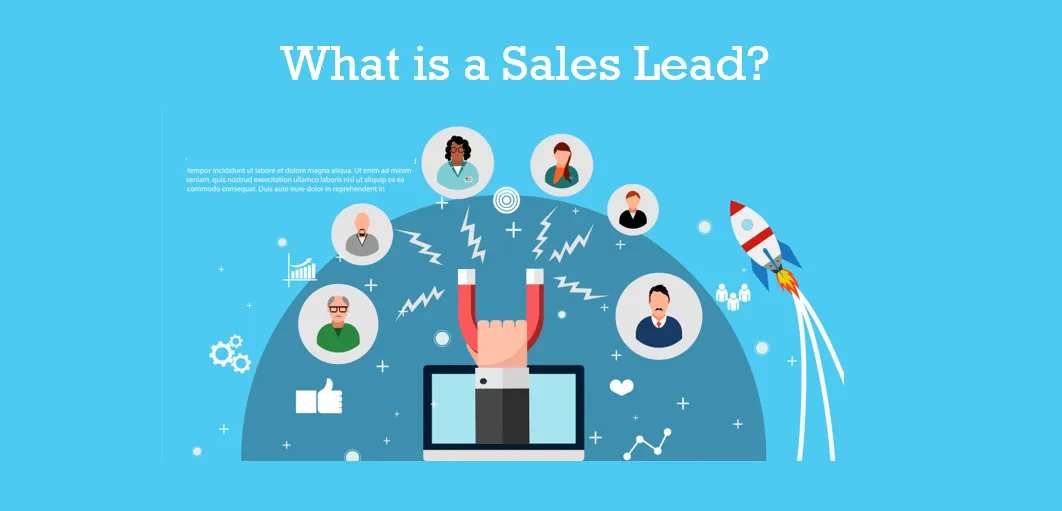
Sales leads play a central role in business growth by driving revenue, building sales funnels, and ensuring that the sales process operates smoothly. Here's why sales leads are so important:
1. Leads Drive Revenue
Sales leads are essential for generating sales and, ultimately, revenue. The more leads you capture and nurture, the higher the likelihood of converting them into sales qualified leads. This leads to increased sales and better business growth.
Without leads, there's no one to convert, making them the backbone of a successful business.
2. Leads Build Funnels
A strong sales funnel starts with capturing leads. Each lead represents a potential customer moving through the stages of the sales funnel, from awareness to conversion. Without sales leads, the funnel would remain empty, and the sales process would halt before it even begins.
Leads allow sales teams to prioritize and manage their efforts, helping move prospects closer to a purchase.
3. Quality Leads Convert
Not all leads are equal, which is why high-quality leads are critical. When you focus on generating high intent leads or qualifying leads effectively, you are more likely to convert them into paying customers.
This is because quality sales leads align with your target audience and are more likely to make a purchase. Low-quality leads, on the other hand, waste time and resources, making it important to focus on lead generation channels that yield high-quality results.
4. Leads Identify Needs
Sales leads also help you understand your potential customers' needs. By capturing leads and analyzing their behaviors, you can identify what solutions they are seeking. This insight helps you fine-tune your products, marketing strategies, and communication efforts to better align with customer needs.
Generating valuable leads, and evaluating their responses, ensures that your sales team can build the right offerings for your prospective clients.
5. Leads Retain Customers
Lead generation isn't just about finding new customers. It's also about building lasting relationships with existing customers. Leads from current customers or website visitors often turn into repeat business opportunities, keeping your revenue steady and your customer base growing.
By focusing on retaining high-quality leads, you can maintain long-term relationships, leading to higher customer lifetime value.
6. Leads Predict Success
Finally, sales leads serve as a predictor of business success. By tracking the quantity and quality of your leads, you can forecast your future sales pipeline and adjust your marketing efforts accordingly.
For example, lead scoring helps you assess the value of each lead and predict how likely it is to convert. This allows you to stay proactive and adjust your strategies to maintain or accelerate growth.
In summary, sales leads are the lifeblood of business growth. They drive revenue, build sales funnels, convert into customers, identify needs, and help retain clients, all while predicting future success. Prioritizing quality leads and understanding how they impact your business is key to sustained growth and success.
15 Best Ways to Generate Sales Leads in 2025?

Generating sales leads is a key priority for businesses aiming to grow in 2025. Each strategy outlined below provides a practical approach to capturing, nurturing, and converting leads, ensuring that your lead generation efforts are effective and impactful.
1. Leverage AI for Lead Generation
AI tools are transforming lead generation by streamlining repetitive tasks and delivering practical insights. They help identify high intent leads, analyze customer behavior, and segment audiences efficiently.
AI streamlines the sales process and ensures your team focuses on the most promising prospects.
How to do it:
- Deploy AI-based lead generation tools to analyze customer interactions.
- Use predictive analytics to forecast potential leads.
- Implement chatbots for instant communication and data collection.
Pro Tip: Pair AI insights with targeted direct mail campaigns for a personalized and memorable outreach.
2. Create High-Converting Landing Pages
Landing pages are essential for capturing lead information. They serve as a dedicated space to showcase your offer, making it easy for visitors to take action.
How to do it:
- Optimize pages with clear CTAs and simple forms.
- Test headlines, visuals, and layouts for better performance.
- Ensure mobile responsiveness to capture leads from all devices.
3. Utilize Social Media Ads
Social media ads allow you to connect with potential leads through highly targeted campaigns. They are an effective way to generate traffic and attract prospective clients.
How to do it:
- Use ad targeting features to reach specific audiences.
- Design engaging visuals and concise messaging.
- Experiment with formats like videos, carousels, and stories.
4. Optimize Your Website for SEO
Search engines are a vital source for organic lead generation. A well-optimized website attracts website visitors, helping you generate more sales leads.
How to do it:
- Research keywords like "sales lead generation" and include them in your content.
- Enhance site speed and improve navigation for better user experience.
- Regularly update content to stay relevant and authoritative.
5. Run Targeted Email Campaigns
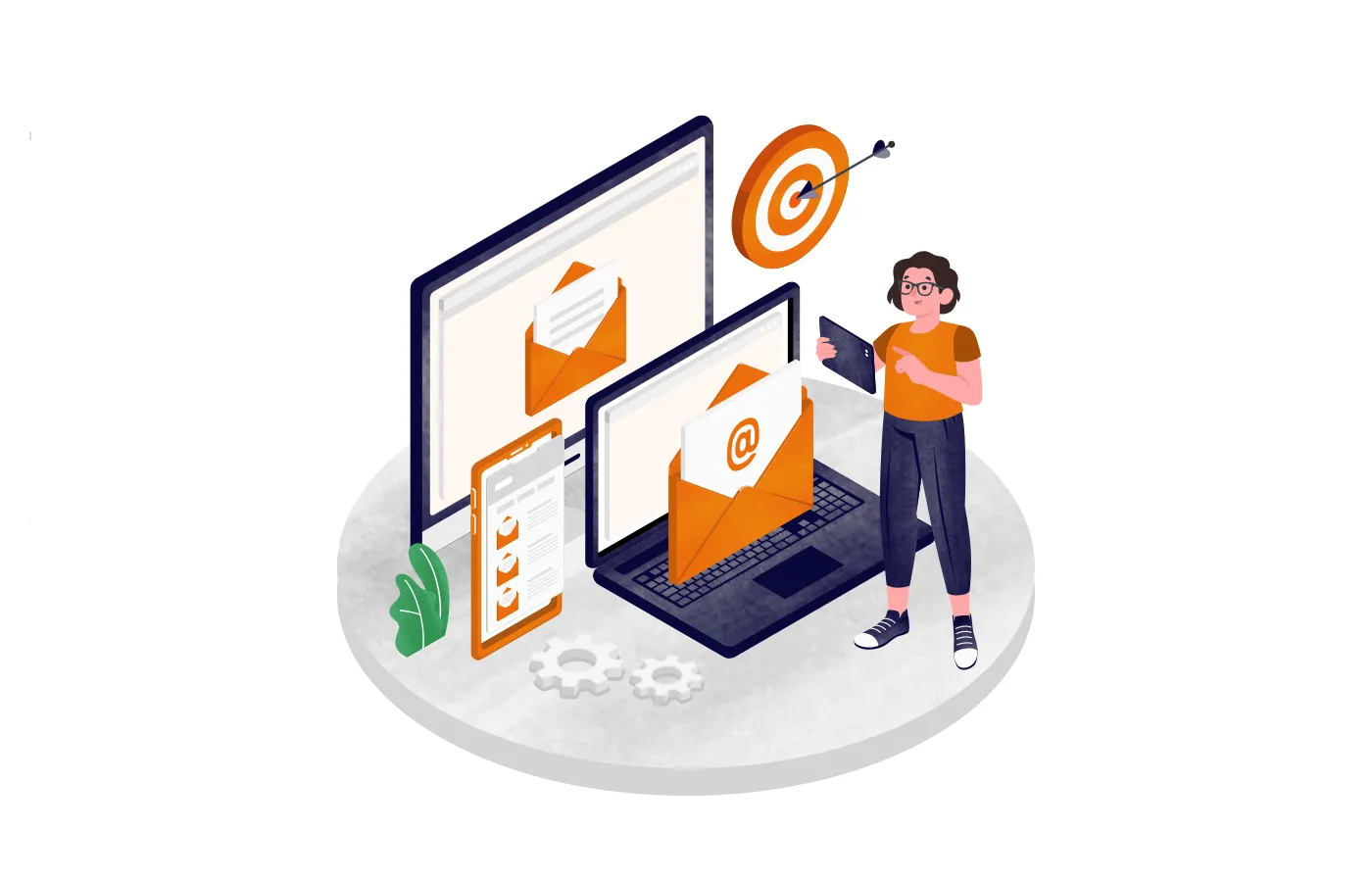
Email campaigns nurture both new leads and existing customers by delivering personalized content that aligns with their interests.
How to do it:
- Segment email lists by demographics or past behaviors.
- Use automation tools to send timely and relevant follow-ups.
- Include exclusive offers to encourage immediate action.
Pro Tip: Combine email campaigns with tracking tools to measure open and click-through rates for ongoing optimization.
6. Host Webinars and Live Demos
Webinars and live demos are interactive ways to educate potential leads about your products or services. These formats build trust and allow you to address specific pain points directly. They’re especially effective for generating traffic and capturing valuable leads.
How to do it:
- Choose topics that solve problems or address common challenges faced by your audience.
- Promote the event across multiple channels, including social media and email.
- Use Q&A sessions during the webinar to engage attendees and collect insights.
Pro Tip: Follow up with attendees after the event by sharing key takeaways or exclusive offers to keep the conversation going.
7. Offer Lead Magnets and Freebies
Lead magnets like eBooks, templates, or free trials entice website visitors to share their contact information. By offering something of value, you can quickly generate leads that are genuinely interested in your business.
How to do it:
- Create resources that solve specific problems or offer unique insights.
- Use landing pages to promote your lead magnets.
- Automate the delivery process to provide instant access upon signup.
8. Use Chatbots for Instant Engagement
Chatbots allow you to interact with visitors in real time, answering questions and gathering information. They streamline the lead qualification process and help nurture leads effectively.
How to do it:
- Place chatbots on high-traffic pages like landing pages or product pages.
- Program the chatbot to ask qualifying questions, such as the visitor's needs and budget.
- Integrate chatbot data with your CRM to keep the sales pipeline organized.
9. Network at Industry Events
Industry events are a great opportunity to meet prospective clients face-to-face. They provide a platform to establish relationships and promote your brand directly.
How to do it:
- Research events relevant to your industry and target audience.
- Prepare a concise pitch to communicate your value proposition.
- Collect contact details and follow up within a few days after the event.
10. Engage with Content Marketing

Content marketing is a powerful way to attract, engage, and retain leads. Creating valuable content positions your business as an expert while building trust with potential leads.
How to do it:
- Publish blog posts and guides targeting keywords like "finding sales leads" and "valuable leads."
- Share content on multiple channels to reach a broader audience.
- Include lead capture forms within your content for easy conversions.
11. Implement Referral Programs
Referral programs leverage your existing customers to bring in new leads. People trust recommendations from others, making this an effective lead generation tool.
How to do it:
- Offer incentives such as discounts or free products for successful referrals.
- Make the process simple and easy to understand for participants.
- Promote the program through social media, email, and your website.
12. Run Pay-Per-Click (PPC) Campaigns
PPC campaigns deliver instant visibility by placing your ads in front of high-intent users on search engines and social media platforms.
How to do it:
- Bid on keywords like "sales conversation" or "sales leader" to target specific audiences.
- Write ad copy with clear CTAs and compelling messaging.
- Continuously monitor campaign performance and adjust bids as needed.
13. Use LinkedIn for Lead Generation
LinkedIn is an effective platform for connecting with decision-makers and sales managers in B2B industries. Its professional network offers targeted tools to generate leads.
How to do it:
- Optimize your LinkedIn profile with keywords like "marketing campaign" and "sales qualified lead."
- Use LinkedIn’s advanced search to find and connect with relevant professionals.
- Publish thought leadership content to establish credibility.
14. Focus on Retargeting Ads
Retargeting ads re-engage visitors who left your website without taking action. These ads remind them of your offerings and encourage them to return.
How to do it:
- Use retargeting pixels on your website to track visitor behavior.
- Design ads that highlight the benefits of your product or service.
- Offer time-sensitive discounts or exclusive deals to prompt action.
15. Track and Analyze Lead Data
Measuring the effectiveness of your lead generation efforts is crucial for continuous improvement. Data analysis helps identify what’s working and where to focus your efforts.
How to do it:
- Use analytics tools to monitor metrics like website traffic and conversion rates.
- Evaluate the performance of different lead generation channels.
- Adjust strategies based on insights to generate more sales leads.
By implementing these strategies, you can effectively generate high-quality leads and nurture them into loyal customers. Each method offers a unique way to engage potential leads and drive business growth in 2025. Let me know if you’d like further refinements or additional tips!
How to Build a Strategy for Generating Sales Leads?
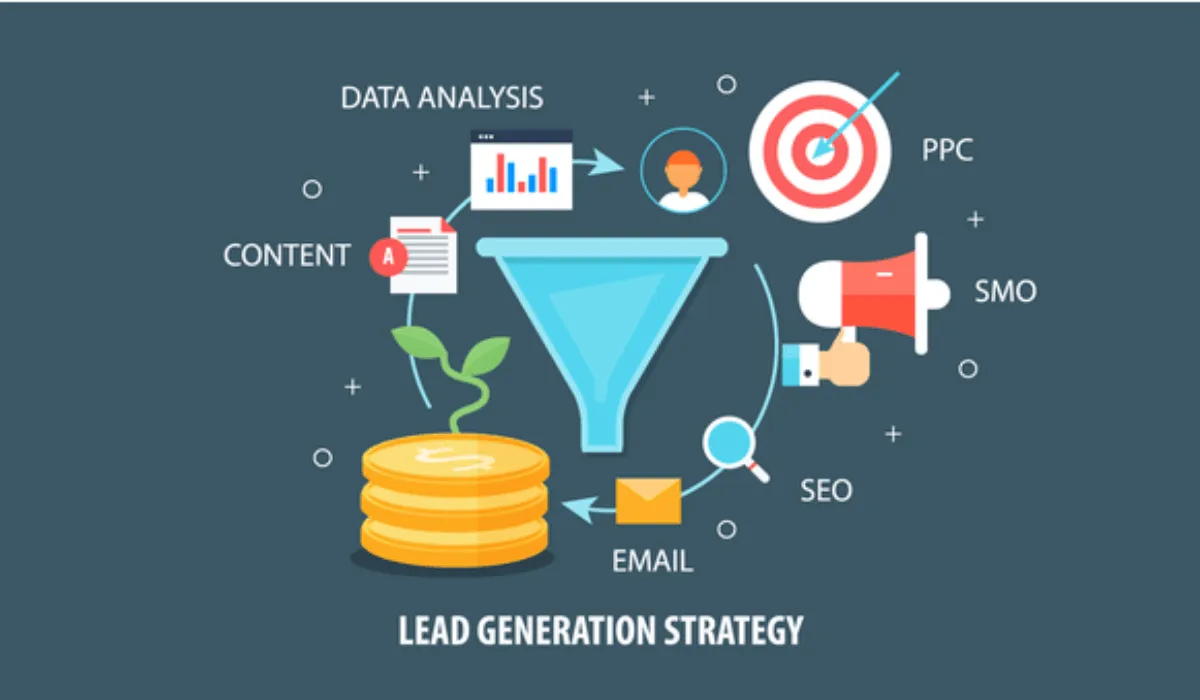
Creating an effective strategy for generating sales leads requires careful planning and consistent effort. Here’s a step-by-step approach to help you develop a comprehensive strategy.
1. Define Your Target Audience
Understanding your target audience is the foundation of any lead generation strategy. It ensures your efforts are focused on reaching the right potential customers.
Steps to define your audience:
- Identify key demographics like age, location, and interests.
- Study customer behaviors to understand their pain points and needs.
- Use tools like surveys and data analytics to gather insights.
2. Set Clear Lead Generation Goals
Clear goals keep your lead generation efforts on track and measurable. Without them, you risk wasting resources on irrelevant activities.
Steps to set goals:
- Define specific, achievable objectives, such as increasing website traffic or capturing 100 leads monthly.
- Align goals with your sales efforts to ensure seamless execution.
- Break goals into smaller milestones to track progress effectively.
3. Map Out Your Sales Funnel
A well-structured sales funnel guides leads through each stage of their journey, from awareness to conversion. This process ensures no potential leads are overlooked.
Steps to map your funnel:
- Divide the funnel into stages: awareness, consideration, and decision.
- Design relevant content for each stage to drive traffic and retain interest.
- Use CRM tools to track where leads are in the funnel.
4. Create Compelling Lead Magnet Offers
Lead magnets like free guides or webinars are excellent for capturing leads. They provide value upfront, encouraging prospective clients to share their information.
Steps to create lead magnets:
- Identify your audience’s needs and offer solutions.
- Keep the content concise and actionable.
- Use contact forms on landing pages to collect lead information.
Pro Tip: Use relevant content in your lead magnets to address specific customer challenges and establish trust.
5. Align Marketing and Sales Teams
Collaboration between marketing and sales teams ensures a unified approach to generating and nurturing leads.
Steps to align teams:
- Schedule regular meetings to share updates on sales conversations and marketing campaigns.
- Use shared tools like a CRM to track leads and streamline communication.
- Develop clear guidelines for lead qualification and follow-up processes.
6. Develop a Lead Nurturing Plan
Lead nurturing helps you build relationships with potential customers and move them closer to making a purchase.
Steps to nurture leads:
- Send personalized follow-up emails based on customer behavior.
- Use multiple channels, like social media and direct mail, to stay connected.
- Focus on building relationships by offering relevant, helpful information.
7. Invest in CRM and Automation Tools
CRM and automation tools simplify lead management by tracking data, automating tasks, and improving efficiency.
Steps to invest in tools:
- Choose a CRM that suits your business size and needs.
- Automate repetitive tasks like sending emails or scheduling follow-ups.
- Use insights from the CRM to refine your strategy and identify gaps.
8. Measure and Adjust Your Strategy Regularly
Regularly evaluating your strategy ensures it stays effective and aligns with your goals.
Steps to measure success:
- Track metrics like website traffic, lead quality, and conversion rates.
- Analyze data to understand which efforts drive results and which don’t.
- Adjust your approach based on the insights to generate better results.
By incorporating these steps and focusing on elements like building relationships and providing value, you can create a lead generation strategy that drives meaningful results. Let me know if you'd like further assistance!
What Tools Can Help You Generate Sales Leads Faster?
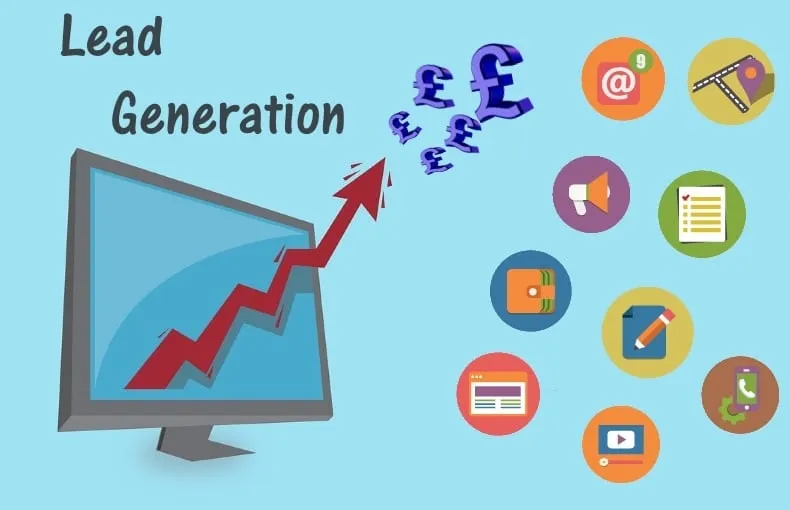
Using the right tools is essential for generating sales leads efficiently and effectively. These tools can help you streamline processes, improve engagement, and focus on converting high-quality leads. Below, we explore eight essential tools, their benefits, and how to use them to accelerate your lead generation efforts.
1. Customer Relationship Management (CRM) Tools
CRM tools help manage customer interactions and organize leads. They provide a centralized system for tracking the sales pipeline and improving team collaboration.
How it helps:
- Organizes and stores all customer and lead data in one place.
- Tracks interactions, follow-ups, and customer preferences.
- Improves coordination between sales and marketing teams.
Tools:
a) Salesforce - A comprehensive CRM platform for lead management and sales tracking.
- Key Features: Pipeline management, AI-powered insights, and customizable dashboards.
- How it helps: Helps prioritize tasks, automate workflows, and close deals faster.
b) HubSpot CRM - A free CRM with robust features for managing leads and nurturing relationships.
- Key Features: Email tracking, live chat, contact management, and analytics.
- How it helps: Simplifies tracking, improves follow-ups, and aligns sales efforts.
2. Email Marketing Automation Software
Email marketing tools automate outreach and enable personalized communication, ensuring timely follow-ups to nurture leads effectively.
How it helps:
- Sends automated email sequences based on lead behavior.
- Tracks metrics like open rates and click-through rates.
- Delivers personalized messages to improve engagement.
Tools:
a) Alore - Alore is a powerful outbound sales platform that specializes in email outreach and lead management. It simplifies the process of connecting with potential leads through personalized and automated email campaigns.
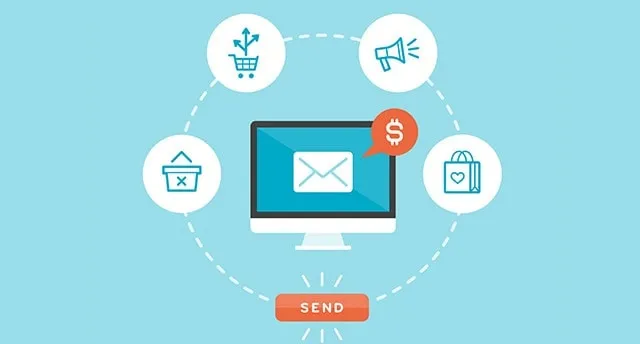
- Key Features: Email warming to ensure deliverability, automated follow-ups, drip campaigns, and detailed analytics for performance tracking.
- How it helps: Alore helps sales teams engage potential leads more effectively by automating time-consuming email tasks. Its email warming feature improves deliverability, ensuring emails land in inboxes, while its analytics tools provide insights to optimize outreach strategies. By offering a collaborative inbox, it allows teams to manage multiple email addresses effortlessly, enhancing organization and productivity.
b) Mailchimp - A leading email marketing platform for creating and managing campaigns.
- Key Features: Templates, A/B testing, segmentation, and analytics.
- How it helps: Automates campaigns and provides actionable insights to refine strategies.
3. Lead Generation Chatbots
Chatbots engage website visitors in real time, capturing information and qualifying leads. They operate 24/7, ensuring no lead opportunity is missed.
How it helps:
- Captures visitor details instantly through conversations.
- Qualifies leads by asking relevant questions.
- Routes leads directly to the sales team or CRM.
Tools:
a) Alore - Alore’s AI-powered chatbot enhances lead generation by engaging visitors and collecting essential data in real time.
- Key Features: Real-time engagement, lead capture forms, and seamless CRM integration.
- How it helps: Alore’s chatbot ensures that every visitor interaction is captured, qualifying leads automatically based on predefined questions. Its integration with CRM tools helps organize and store leads efficiently, enabling sales teams to focus on follow-ups. The chatbot’s ability to provide instant responses to inquiries improves user experience and drives meaningful engagement.
b) Drift - An AI-driven chatbot platform for lead generation and engagement.
- Key Features: Conversational marketing, lead routing, and analytics.
- How it helps: Captures high-quality leads through interactive chat experiences.
4. Social Media Management Platforms
Social media platforms are vital for reaching potential leads. Management tools simplify scheduling, monitoring, and analyzing social media efforts.
How it helps:
- Schedules posts to maintain a consistent presence.
- Monitors engagement and audience behavior.
- Analyzes performance to identify successful campaigns.
Tools:
a) Hootsuite - A social media management tool for scheduling and analyzing posts.
- Key Features: Automated posting, engagement tracking, and detailed analytics.
- How it helps: Saves time and provides insights to refine social media strategies.
b) Buffer - A simple tool for planning and publishing content across platforms.
- Key Features: Custom posting schedules, performance analytics, and content suggestions.
- How it helps: Helps maintain a consistent social media presence while tracking audience engagement.
5. Marketing Analytics Tools
These tools help track and measure the success of your lead generation campaigns, providing actionable insights for improvement.
How it helps:
- Tracks website traffic, conversion rates, and lead quality.
- Identifies high-performing lead generation channels.
- Provides insights to optimize marketing strategies.
Tools:
a) Google Analytics - A free tool for tracking website traffic and user behavior.
- Key Features: Traffic analysis, audience demographics, and conversion tracking.
- How it helps: Helps refine strategies by providing detailed visitor insights.
b) Hotjar - An analytics tool focused on understanding user interactions.
- Key Features: Heatmaps, session replays, and feedback collection.
- How it helps: Identifies user preferences and improves landing page performance.
6. Landing Page Builders
Landing pages are essential for converting visitors into leads. Builders simplify creating pages optimized for lead capture.
How it helps:
- Creates professional, high-converting pages.
- Optimizes pages for mobile users.
- Integrates seamlessly with CRMs and email tools.
Tools:
a) Unbounce - A platform for creating custom landing pages.
- Key Features: Drag-and-drop editor, A/B testing, and form integrations.
- How it helps: Increases conversions with user-friendly, optimized designs.
b) Instapage - A landing page tool focused on personalization and analytics.
- Key Features: Page builder, heatmaps, and A/B testing.
- How it helps: Provides insights to improve landing page performance.
7. AI-Powered Lead Scoring Tools
These tools prioritize leads based on their engagement and likelihood to convert, helping sales teams focus on high-quality prospects.
How it helps:
- Scores leads based on predefined criteria.
- Prioritizes high-quality leads for follow-up.
- Improves overall sales efficiency.
Tools:
a) Alore - It includes AI-driven lead scoring capabilities to streamline lead prioritization.
- Key Features: Customizable scoring algorithms, real-time updates, and CRM integration.
- How it helps: Alore analyzes lead behavior and assigns scores, enabling sales teams to focus on the most promising leads. This improves efficiency and ensures high-quality leads are prioritized for follow-ups.
b) Leadspace - A platform for lead scoring and audience segmentation.
- Key Features: Predictive analytics, intent scoring, and data enrichment.
- How it helps: Helps focus efforts on leads most likely to convert.
8. Web Scraping Tools for Lead Data
Web scraping tools extract data from online sources, helping businesses identify potential leads efficiently.
How it helps:
- Collects data from websites, directories, and social media.
- Identifies new prospects for outreach.
- Reduces the time spent on manual data gathering.
Tools:
a) Octoparse - A web scraping tool for automating data extraction.
- Key Features: Drag-and-drop interface, data export, and scheduled scraping.
- How it helps: Gathers detailed lead data quickly for outreach campaigns.
b) Scrapy - An open-source web scraping framework for developers.
- Key Features: Flexible scripting, robust data extraction, and API support.
- How it helps: Enables businesses to collect specific lead data for targeted efforts.
By incorporating tools like Alore alongside other specialized platforms, you can enhance your lead generation efforts, ensuring efficiency, personalization, and measurable success. Let me know if you'd like additional refinements!
How Can You Qualify Sales Leads for Better Conversions?
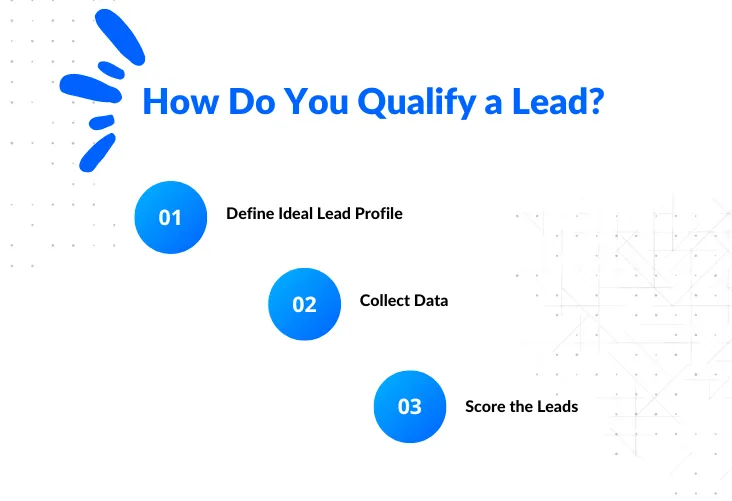
Qualifying sales leads is essential for ensuring your efforts are focused on the prospects most likely to convert. Here’s how you can qualify leads effectively:
1. Assess Lead Fit
Start by determining if the lead matches your ideal customer profile. Consider factors like industry, company size, and specific needs to ensure they align with your offerings. This step helps you focus on leads with the highest potential.
2. Use Lead Scoring
Assign scores to leads based on their interactions and behavior. Leads that engage more with your website, emails, or demos typically have higher conversion potential. A scoring system allows you to prioritize high-value leads over less engaged ones.
3. Track Engagement
Monitor how leads interact with your content, emails, and website. Engagement levels provide valuable insights into their interest and readiness to make a decision. The more engaged a lead is, the closer they are to converting.
4. Measure Buying Intent
Identify signals that indicate a lead’s intent to purchase. These could include downloading product guides, requesting demos, or repeatedly visiting pricing pages. Understanding intent helps you tailor your follow-up approach effectively.
5. Evaluate Budget and Timing
Finally, assess whether the lead has the budget and a realistic timeline for making a decision. This ensures your efforts are focused on leads that can commit within your sales cycle.
By qualifying leads through these steps, you can streamline your sales process, focus on high-potential prospects, and achieve better conversion rates.
How to Use Content Marketing for Generating Sales Leads?

Content marketing is a powerful way to attract and engage potential customers while building trust and credibility. Here’s how you can use it effectively to generate sales leads:
1. Create Blog Content
Writing blog posts on topics that address common problems or questions in your industry can drive traffic to your website. Provide actionable insights and include a clear call-to-action (CTA) to encourage readers to explore your services or contact you.
2. Offer Gated Content
Gated content, such as eBooks, templates, or exclusive reports, requires users to provide their contact information to access it. This approach helps you capture valuable lead information while offering something useful in return.
3. Use Case Studies
Case studies showcase real-life success stories of how your products or services solved problems for customers. They provide proof of your expertise and demonstrate your ability to deliver results, encouraging leads to reach out.
4. Leverage Video Content
Videos are engaging and easy to consume. Tutorials, product demos, and customer testimonials in video format can grab attention and convey your message effectively. Include a CTA at the end to guide viewers toward the next step.
5. Optimize for SEO
Search engine optimization (SEO) helps your content rank higher, making it easier for potential leads to find you. Focus on writing clear, valuable content that answers the questions your audience is searching for online.
6. Show Social Proof
Sharing reviews, testimonials, or user-generated content on your website or social media builds trust. Highlighting satisfied customers encourages others to consider your offerings.
By using content marketing thoughtfully, you can attract the right audience, encourage engagement, and convert readers into valuable leads.
What Are the Common Mistakes to Avoid When Generating Leads?

Lead generation is crucial for business growth, but common mistakes can hinder your efforts. Below are six mistakes businesses often make and practical ways to avoid them.
1. Ignoring Lead Quality Over Quantity
Focusing solely on collecting a large number of leads without considering their quality can waste time and resources. Poor-quality leads are less likely to convert, leaving your sales team overwhelmed with unqualified prospects.
How to avoid it:
- Clearly define your ideal customer profile.
- Use lead scoring to prioritize high-potential leads.
- Regularly review your lead sources to focus on those delivering quality.
2. Neglecting Follow-Ups
Failing to follow up with leads can result in missed opportunities. Many leads require nurturing before they are ready to make a decision.
How to avoid it:
- Set up automated email sequences to ensure timely follow-ups.
- Personalize follow-up messages based on the lead’s previous interactions.
- Track follow-up activities to avoid gaps in communication.
3. Failing to Segment Your Leads
Treating all leads the same way can lead to generic messaging that doesn’t resonate. Each lead has unique needs and preferences that should be addressed.
How to avoid it:
- Segment leads based on demographics, behavior, or stage in the sales cycle.
- Create targeted campaigns for each segment.
- Use analytics tools to identify trends within your lead database.
4. Overcomplicating Your Lead Generation Process
A complex process can confuse leads and deter them from engaging. Simple and straightforward experiences are more effective.
How to avoid it:
- Use clear CTAs and simple forms on landing pages.
- Streamline your website navigation to make information easy to find.
- Test your lead generation process to identify unnecessary steps.
5. Not Personalizing Your Outreach
Generic outreach lacks impact and may fail to capture a lead’s interest. Personalization is key to building trust and engagement.
How to avoid it:
- Use the lead’s name and reference their specific needs in communications.
- Tailor messages based on their past behavior or preferences.
- Leverage CRM tools to store and use lead data effectively.
6. Relying Only on One Lead Generation Channel
Overdependence on a single channel can limit your reach and leave you vulnerable if that channel becomes less effective.
How to avoid it:
- Diversify your lead generation efforts across multiple channels like social media, email, and direct engagement.
- Experiment with new platforms and strategies to expand your reach.
- Track performance across channels to identify the most effective ones.
Avoiding these common mistakes can help you create a more effective lead generation strategy, ensuring that your efforts deliver meaningful results.
How Can Automation Help You Generate Leads for Sales?
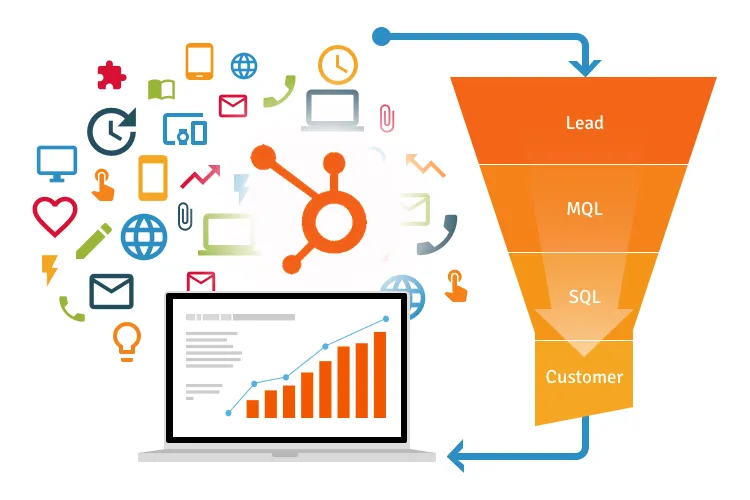
Automation simplifies lead generation by handling repetitive tasks and allowing your team to focus on building relationships. It can capture leads through chatbots, nurture them with personalized email sequences, and track interactions to understand their needs better.
Automated workflows ensure timely follow-ups, improving the chances of conversion. Tools like CRM systems can segment leads, while lead scoring automation helps prioritize high-value prospects.
Additionally, automation ensures consistent engagement across channels, such as email, social media, and your website. By integrating automation into your lead generation process, you can save time, reduce manual errors, and enhance the overall efficiency of your efforts.
How to Measure the Success of Your Lead Generation Efforts?

Measuring the effectiveness of your lead generation efforts helps you identify what works, refine strategies, and maximize results. Here’s how you can assess your lead generation performance using key metrics.
1. Track Conversion Rates
Conversion rates reveal how many leads turn into customers. This metric helps you evaluate the efficiency of your lead generation and sales efforts.
- Calculate the percentage of leads that move to the next stage of the funnel.
- Compare rates across campaigns to identify high-performing strategies.
2. Measure Cost Per Lead (CPL)
CPL helps you understand how much you’re spending to generate each lead. Lower CPL indicates efficient use of resources.
- Divide the total campaign cost by the number of leads generated.
- Monitor CPL trends to ensure campaigns remain cost-effective.
3. Monitor Lead-to-Customer Ratio
This ratio indicates how many leads convert into paying customers, providing insights into the quality of leads and the effectiveness of follow-ups.
- Compare the number of qualified leads to the actual conversions.
- Use this metric to adjust targeting and lead nurturing strategies.
4. Evaluate Lead Quality
High-quality leads are more likely to convert, making it essential to evaluate their potential value.
- Use feedback from sales teams to assess lead readiness.
- Review how leads interact with your content and campaigns.
5. Assess Sales Cycle Length
The time it takes to convert a lead into a customer indicates the efficiency of your sales process.
- Track average sales cycle duration for each campaign.
- Shorten cycles by identifying and addressing bottlenecks.
6. Analyze Campaign ROI
Return on investment (ROI) shows how much revenue your lead generation campaigns generate compared to their costs.
- Calculate ROI by dividing the revenue from leads by the campaign cost.
- Focus resources on campaigns with the highest ROI.
7. Monitor Engagement Metrics
Engagement metrics like click-through rates, email opens, and website visits indicate how leads interact with your content.
- Identify which content resonates most with your audience.
- Adjust strategies based on engagement patterns.
8. Review Funnel Progression
Tracking how leads move through your sales funnel helps pinpoint weak areas in your process.
- Measure drop-off rates at each stage.
- Optimize weak points to improve overall funnel efficiency.
By regularly monitoring these metrics, you can refine your lead generation strategies and focus on approaches that deliver meaningful results.
Conclusion
Generating sales leads is a crucial step in growing any business, and doing it effectively requires a mix of strategy, tools, and consistency. By understanding your audience, using the right tools, and avoiding common mistakes, you can create a process that works.
Remember, it’s not just about getting more leads, it’s about getting the right ones. Start small, refine your approach, and watch your efforts turn into meaningful results. Which strategy will you try first?

.webp)





